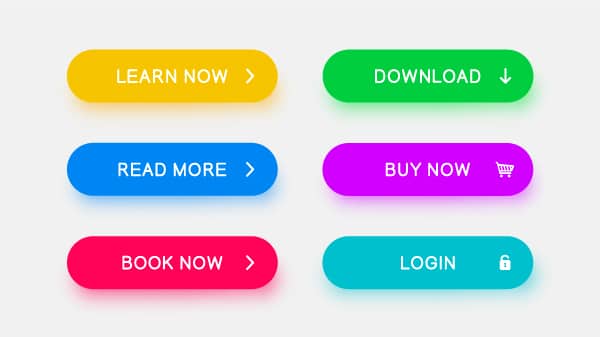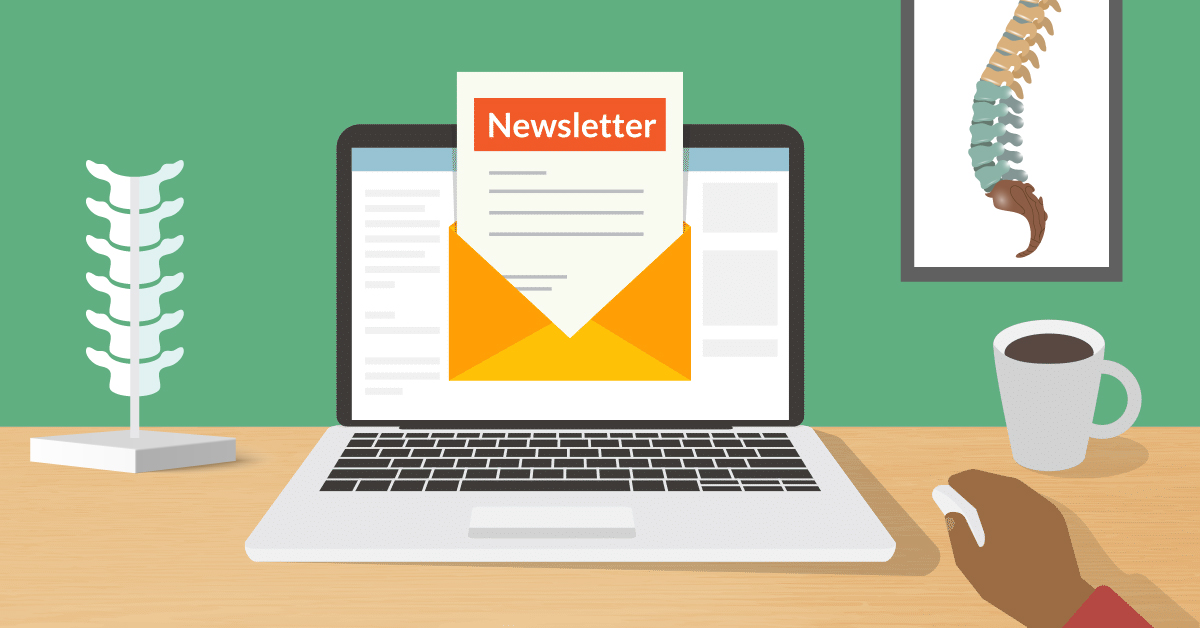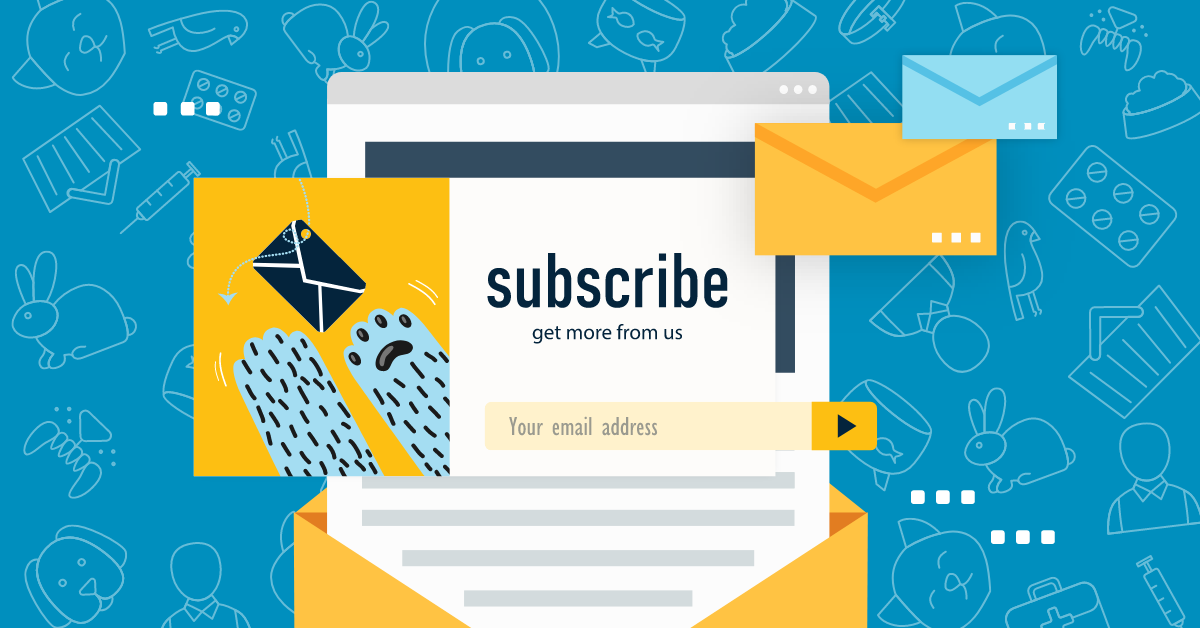Email Marketing Mistakes That Decrease Your Practice's Open Rates
Email marketing is one of the best ways to turn potential patients or clients into lifelong customers. If you’ve created your email marketing strategy and have been executing campaigns

but still aren’t seeing the open rates that you would like, it may be time to change your tactics.
Utilizing email marketing for your healthcare practice will help your business build a relationship with your clients and create loyalty and trust.
The opportunities to reach a wider audience are almost endless. Doing an email marketing campaign can be used to welcome new subscribers, get more engagement on newly published content, invite recipients to events, and much more.
10 Mistakes That Decrease Your Practice’s Email Open Rates
Are you ready to discuss 10 common email marketing mistakes that could negatively affect your email open rates and find out how to fix them? Let’s dive in!
1. Writing subject lines that don’t capture the reader’s attention
Writing a subject line that interests a potential client is the first step towards increasing your practice’s open rates. Personalizing emails based on the industry your practice is in, as well as the specialties you focus on, is extremely important. Your content needs to be relevant and timely.
For example, if you own an eye care practice and it’s almost time for school to begin again, send an email to subscribers about scheduling their children’s back to school eye exams.
The subject line could read “Don’t forget about Back-to-School eye exams!” They want to make sure that their children’s eyes are in great condition before they begin the school year and your relevant and timely subject line will encourage them to open the email and book an appointment with you.
According to Optinmonster, 47% of email recipients will open emails based on the subject line alone. Your subject lines have the power to make your email marketing campaign a success or send you back to the drawing board.
In order to better pique the interests of your email subscribers, here a few tips:
- Tell patients what the email they’re receiving is actually about – we know this one sounds obvious, but if they already know what will be in the email, and it captures their attention, then they’ll open it.
- Don’t make it too long – keep the subject line short and sweet so that they can get through it quickly and it’s readable.
- Don’t make your email address “no-reply” – human beings are naturally curious, but if they get sent an email that they think could possibly be spam, they won’t open it.
2. Not including a call-to-action
When you don’t include a clear call-to-action (CTA) in your email, recipients will have no idea what you want them to do. Before you even begin creating an email, think about why you are sending it. Your emails should always serve a purpose.
Have you recently published a new blog post and want more engagement? Insert a “Read more!” button. Are you sending out your monthly newsletter to alert patients to the latest happenings at your practice? Include a CTA that says “See the rest of our newsletter here.” Will your business be holding some type of event in the near future? Be sure to add a button that tells them to “Reserve a spot now!”
Be as concise as possible so subscribers don’t have to wonder what actions to take next after reading the email.
The other components of your email like text, images, videos, or infographics should all support and guide your recipients to the CTA.
3. No images or too many images
Including pictures in your email is a great method to get recipients to be drawn to read your email, but how many images is too many?
You have to be strategic in how you incorporate graphics into each and every one of your emails. Also, keep in mind that not all your subscribers can view images based on their email account settings. If they don’t, they will not be able to see the images you have included.
This is why alt text is important. Alt-text is essentially a description of whatever the image is. If the image does not load for them, they’ll at least have an idea of what it is. Just be mindful of how many graphics you use because seeing a bunch of big empty spaces with alt-text throughout the email is not aesthetically pleasing for your recipients.
4. Branding is absent

Whenever someone receives an email from your practice, you want your branding to be recognizable. Emails are one way to showcase your brand’s personality while also differentiating yourself from other businesses they are getting emails from.
When they get an inbox notification and open the email, they should know it’s from you. Some ways that you can brand your emails are:
- Include your logo
- Add your brand’s custom color scheme
- Use designated fonts
- Be consistent with your brand personality and voice
- Use a standard email template
Staying on-brand with your email makes your messaging more effective and memorable for your subscribers.
5. Email is too long
Keep it short and sweet may be a cliche, but it’s still very much true. You generally want to avoid writing an extremely long email because readers are going to stop at a certain point and become uninterested in whatever the email is about.
Creating long emails can be very time-consuming for you and your staff, only to have someone automatically close it once they realize how long it is.
What is the objective of your email? Is your practice offering discounted prices? Is it a newsletter email? Are you having an event? Whatever the subject of the email, just get straight into. You want the emails to be engaging and easy for readers to in a moment’s time.
6. Focuses on the product and not the customer
If your email comes across as trying too hard to sell a product, people may not be interested. They want to learn more about you as a business and if all of your emails are product-centric, they don’t get that opportunity.
Make a positive impression by allowing your clients and patients to feel important when they receive your emails; you don’t want them to feel like someone who just purchases products or services from you. Be transparent and personal so they learn to trust you.
Instead of attempting to sell them a product, sell them a solution. Determine your subscriber’s pain points and content interests. How can you provide them with something valuable that will teach them something or help them solve a problem?
For example, let’s say you’re a chiropractor who specializes in relieving pain for patients who have been in an auto accident. You could send an email about how chiropractic care can help treat back, neck, and whiplash injuries that they sustained in the accident. You’re not specifically selling them a product, but a solution to a problem that they have.
Don’t proclaim your practice as a place where consumers come just to buy things. You want to be recognized as one of the top competing practices in your local area.
7. Not optimizing for mobile

A well-structured email provides a great user
experience on both mobile devices and desktops.
Did you know? This year, over 50% of opened emails occurred on mobile.
Most users are now looking at emails through their smartphones; what happens if you don’t optimize for mobile devices? Your open rate will decrease. If an email looks good on a desktop, but not on mobile, recipients will not be inclined to read through.
In order to properly optimize your email for mobile devices, you can:
- Include a CTA button
- Reduce your image file size
- Use a responsive email template
If users cannot properly read your email when they open it on a mobile device, they’ll click out of it and may be skeptical about opening the next one your practice sends.
8. No consistency
Creating an email marketing strategy with a calendar of your email sends will help you to stay on schedule and on top of when emails get sent out to your patients or clients. Maintaining consistency will increase the probability of your email being opened.
Let’s say someone receives an email from you every week. They’ll be expecting that from you because they know you stick to a strict schedule and reach out to them on a weekly basis. But if you send emails only every three months or just whenever it’s convenient for you, subscribers will forget about you. Email frequency matters and directly affects how many opens you receive.

10. Your email list isn’t segmented
Email list segmentation separates your subscribers into smaller, more segmented groups so you can send more targeted emails. Each of these smaller groups has specific characteristics that put them there, so you can personalize what content you send to those users.
For example, you wouldn’t send the exact same email to a brand new subscriber that you would a longtime client. You would want to first, send them a welcome email before just diving right in.
Benefits of Email Marketing
Email marketing for healthcare is an excellent way to build credibility, increase appointment bookings, improve communication between you and your clients, generate leads and so much more.
If you don’t know where to begin, there are resources that are available to get you started. If you want to increase your open rates and number of subscribers, begin creating a concrete email campaign with the help of these 10 tips.
For more information on building email marketing campaigns, check out our other resources
Launch a Successful Email Marketing Campaign With These Easy Steps
When to Email Your Patients and Why
Sending Follow Up Emails to Build Patient Loyalty




